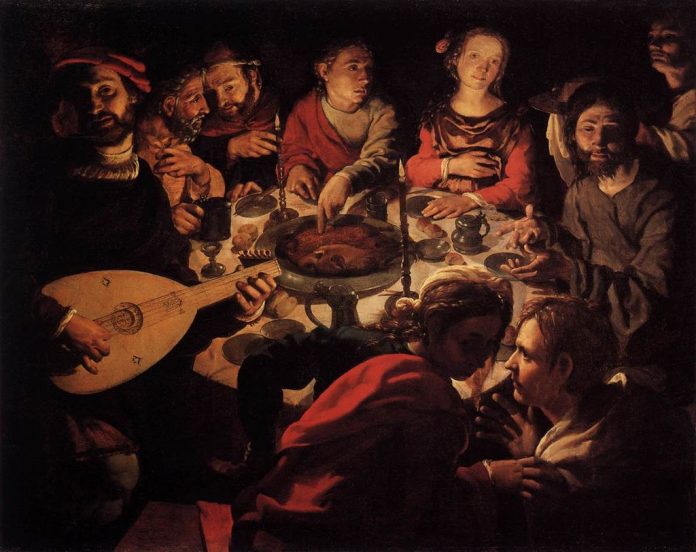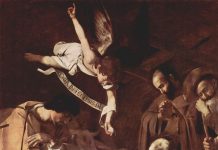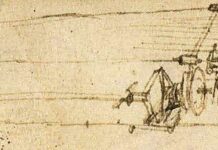
(In the midst of our troubled world, we must keep hope alive, and that includes a celebration of marriages, which is our most foundational foothold on the future. So may these joyful words from Father Weaver give you some glimmer of that hope. Editor)
As a Catholic priest serving the faithful in Southwestern Ontario, administering the sacraments, that is, those “…efficacious signs of grace…by which divine life is dispensed to us”, is both humbling and fulfilling[1]. To act in persona Christi Capitis and witness the power of the Risen Lord Jesus transform the hearts and minds of men and women through the sacraments prompts me to thank God for calling me to the holy priesthood.
Of all the sacraments, Matrimony is particularly unique in that the baptized couple, as ministers of Christ’s grace, confer the sacrament upon each other by expressing their consent before the Church – normally a priest or deacon and two witnesses (CCC 1623). In preparation for this magnificent celebration, a great deal of planning is often invested into wedding accessories. These include decorations, the attire of the bride and groom and their wedding party, and, of course, the post-wedding festivities.
Regardless of how elaborate a wedding may be, the inherent beauty of the Catholic marriage liturgy magnificently conveys the transcendental nature of the sacrament being conferred. And at the end of the liturgy when the bride and groom are introduced as “Mr. and Mrs…”, the assembly typically claps with approval and delight.
The emblematic joy of weddings reflects the fact that marriage between one man and one woman is rooted within the origins of humanity, as the Book of Genesis states that “…God created man in [H]is image…male and female [H]e created them” (1:27). It also explains that when “…a man leaves his father and mother and clings to his wife…they become one flesh” (2:24).
Our biological sex, whether we are male or female, is a God-given gift determined at conception by our DNA and it is imprinted into every cell of our bodies. Each cell normally contains 23 pairs of chromosomes. The 23rd pair differ between the sexes as females have 2 copies of the X chromosome while males have one X and one Y chromosome[2]
Furthermore, there are at least 6,500 genetic differences between men and women[3]. This results in all sorts of differences – some of which are obvious in terms of secondary sex characteristics, and others which are not. For instance, men have larger hearts and lungs whereas women have larger livers, stomachs, thyroid glands, and kidneys. Moreover, women are deemed to be more resistant than men to many diseases and this is related to their adrenal glands producing more cortin[4]
There are many other sex-based differences as well, but what’s important within this context is that we recognize that men and women are clearly equal but distinct. With this distinction there is a mystery, a complementarity, that each one brings to the other.
It is this distinction between men and women, rooted in their God-given equality, that draws them together to form a union, a union we recognize as marriage, and this union is life-giving in that it is ordered toward the birth of children. And the birth of children means the continuation of human societies. No wonder weddings bring with them so much celebration!
Not surprisingly, weddings were also greatly celebrated in Jesus’ day. In fact, the celebration of a Jewish wedding lasted for seven days[5] We read of such a wedding in John’s Gospel account, which describes the wedding at Cana whose guests included Jesus and his disciples and his mother Mary (2:1-2).
The Evangelist explains that as the wedding festivities continued a major concern emerged; all of the wine had been drunk. And so, Mary told Jesus, “They have no wine.” To this Jesus responded, “Woman, what concern is that to you and to me?” (2:3-4b). This might sound like a bit of tension between Mary and Jesus but when the Greek translation is taken into account it actually implies “How does this situation concern us?” After all, Jesus and Mary were guests at the wedding and they were not responsible for providing the food and drink[6]!
Jesus then told Mary that “my hour has not come” (2:4b). The “hour” Jesus referred to here is the time of His Crucifixion when He gave Himself up for the salvation of all of humanity. But Jesus, responding to His mother’s suggestion, decided to solve the wine-shortage problem and thus changed about 600 litres of water into wine (2:6-9). Through this miracle Jesus exhibited His divine nature and the great wedding celebration continued[7]
There is much to gain by prayerfully considering this miracle. For instance, it is apparent Jesus took on the role of the bridegroom, as the steward thought the bridegroom had provided more wine but in fact it was Jesus (2:9-10). Furthermore, as insinuated above, this miracle points to Jesus’s “hour”, that is, His glorious Death on the Cross, for the Crucifixion was the event at which Our Lord, as the Divine Bridegroom, gave Himself up for His Bride, the Church, so that her members may have eternal life (cf. Eph 5:25-32).
It is vital we recognize this glorious relationship between earthly marriage and Our Lord’s eternal sacrifice on the Cross, for both are life-giving. In other words, the life-giving nature of marriage between a man and a woman points us to the life-giving nature of the marriage between Christ and the Church – a marriage that was consummated with Our Lord’s Passion and Death on the Cross!
As Catholics we know that at Mass we experience the transformative graces that Christ won for us through His eternal Sacrifice on the Cross. This is especially evident at the consecration when the bread and wine are transformed into the Body, Blood, Soul, and Divinity of the Risen Lord Jesus Christ, as the priest recites those words of Jesus at the Last Supper when he offered His Body and Blood for all of us. It is here that the “past is made present” and we enter into the saving mystery of Jesus’s Crucifixion and Resurrection through which we inherit eternal life[8] .
When we consider how the life-giving nature of earthly marriage reflects the life-giving nature of Jesus’s Eternal Sacrifice on the Cross, and how we experience those graces of Jesus’s Sacrifice when we come to Mass, then it is clear that the Eucharistic Liturgy is indeed a wedding with all its celebration and festivity[9]! It is wondrous to ponder this profound relationship between marriage and the Holy Mass. For instance, just as how through marriage a man and a woman are united as they become “one flesh” (Gen 2:24; Mt 19:5; Mk 10:8; Eph 5:31), so too are we united with Christ through the Eucharist, for by receiving Communion we consume the very Flesh and Blood of the Risen Lord.
Furthermore, just as how wedding festivities often include a great banquet, the Eucharistic Liturgy itself is both a participation in Jesus’s eternal sacrifice and a divine banquet! This is why we hear at Mass “Behold the Lamb of God, behold him who takes away the sins of the world. Blessed are those called to the supper of the Lamb”[10]
Given that the Holy Mass is indeed a life-giving Eucharistic wedding feast it is most fitting that we participate in it with great joy and awe. For it is at Mass that we celebrate and enter more deeply into our marriage, into our union, with the Risen Lord Jesus Christ and with the great hope that we will be part of this union for eternity! Think of it – a divine and perfect honeymoon which never, ever ends!
[1] (Source: Catechism of the Catholic Church [CCC], 1131)
[2] (Source: https://medlineplus.gov/genetics/understanding/basics/howmanychromosomes/#:~:text=The%2023rd%20pair%2C%20the%20sex,Y%2C%20are %20the%20sex%20chromosomes.).
[3] (Source:
https://www.dailysignal.com/2017/12/11/cretella–transcript/)
[4] (Source: https://thoughtcatalog.com/lorenzo–jensen–iii/2015/06/14–real–physical–differences–between–men–and–women–besides–the–obvious/).
[5] (Source: B. Pitre, Mass Readings Explained, 2nd Sunday in Ordinary Time, Year C).
[6] (Source: B. Pitre, Mass Readings Explained, 2nd Sunday in Ordinary Time, Year C)
[7] (Source: B. Pitre, Mass Readings Explained, 2nd Sunday in Ordinary Time, Year C).
[8] (Source: CCC, 1364)
[9] (Source: B. Pitre, Mass Readings Explained, 2nd Sunday in Ordinary Time, Year C)
[10] (Source: B. Pitre, Mass Readings Explained, 2nd Sunday in Ordinary Time, Year C).









